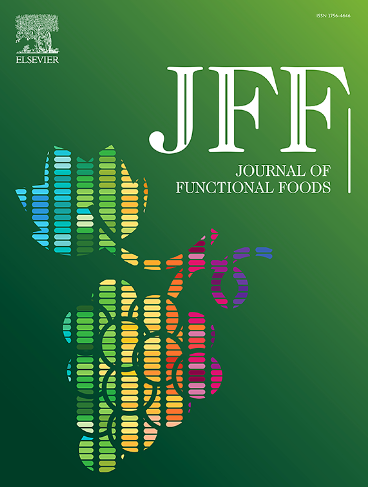Identification and characterization of antihypertensive peptides from edible Grifola frondosa (maitake) mushroom hydrolysates: Suppression of vascular remodeling in angiotensin II-induced zebrafish model
IF 3.8
2区 农林科学
Q2 FOOD SCIENCE & TECHNOLOGY
引用次数: 0
Abstract
Grifola frondosa (maitake), a widely consumed edible fungus with documented cardiovascular benefits, is rich in protein and serves as a valuable natural source for bioactive peptide production. Despite its potential, studies on blood pressure-lowering peptides derived from G. frondosa are limited. In this study, we enzymatically hydrolyzed G. frondosa proteins to generate ACE inhibitory peptides, followed by chromatographic separation and purification. Peptidomics-based high-throughput sequencing was used to analyze fractions with potent ACE inhibitory activity, leading to the identification of eight novel peptide sequences (APPLRP, LPPLL, LPPLLL, LPPLPRP, LPPPLLK, LPPRLP, LPPRP, and RPPLP). These peptides were selected based on their amino acid positional characteristics, ADMET properties, and cross-referencing with established databases. Molecular docking analysis revealed that APPLRP and LPPLPRP exhibited the strongest ACE binding affinity, suggesting their superior inhibitory potential. Furthermore, network pharmacology elucidated the mechanistic pathways underlying the antihypertensive effects of these peptides, particularly their role in mitigating angiotensin II-induced vascular remodeling in a zebrafish model.

灰树花食用菌水解产物中降压肽的鉴定和表征:抑制血管紧张素ii诱导的斑马鱼血管重塑模型
灰树花(灰树花)是一种广泛食用的食用菌,富含蛋白质,是生产生物活性肽的宝贵天然来源。尽管其潜力巨大,但从灰树花中提取的降血压肽的研究有限。本研究通过酶解灰树花蛋白生成ACE抑制肽,并进行色谱分离纯化。利用基于肽域的高通量测序技术对具有ACE抑制活性的片段进行分析,鉴定出8个新的肽序列(APPLRP、LPPLL、LPPLLL、LPPLPRP、LPPPLLK、LPPRLP、LPPRP和RPPLP)。这些肽是根据它们的氨基酸位置特征、ADMET性质和与已建立的数据库交叉参考来选择的。分子对接分析显示,APPLRP和LPPLPRP表现出最强的ACE结合亲和力,表明它们具有较强的抑制潜力。此外,网络药理学阐明了这些肽的降压作用的机制途径,特别是它们在减轻斑马鱼模型中血管紧张素ii诱导的血管重塑中的作用。
本文章由计算机程序翻译,如有差异,请以英文原文为准。
求助全文
约1分钟内获得全文
求助全文
来源期刊

Journal of Functional Foods
FOOD SCIENCE & TECHNOLOGY-
CiteScore
9.60
自引率
1.80%
发文量
428
审稿时长
76 days
期刊介绍:
Journal of Functional Foods continues with the same aims and scope, editorial team, submission system and rigorous peer review. We give authors the possibility to publish their top-quality papers in a well-established leading journal in the food and nutrition fields. The Journal will keep its rigorous criteria to screen high impact research addressing relevant scientific topics and performed by sound methodologies.
The Journal of Functional Foods aims to bring together the results of fundamental and applied research into healthy foods and biologically active food ingredients.
The Journal is centered in the specific area at the boundaries among food technology, nutrition and health welcoming papers having a good interdisciplinary approach. The Journal will cover the fields of plant bioactives; dietary fibre, probiotics; functional lipids; bioactive peptides; vitamins, minerals and botanicals and other dietary supplements. Nutritional and technological aspects related to the development of functional foods and beverages are of core interest to the journal. Experimental works dealing with food digestion, bioavailability of food bioactives and on the mechanisms by which foods and their components are able to modulate physiological parameters connected with disease prevention are of particular interest as well as those dealing with personalized nutrition and nutritional needs in pathological subjects.
 求助内容:
求助内容: 应助结果提醒方式:
应助结果提醒方式:


